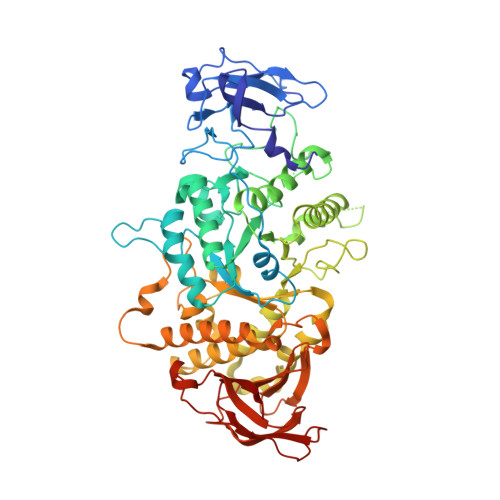Crystal Structures of Escherichia coli Branching Enzyme in Complex with Linear Oligosaccharides.
Feng, L., Fawaz, R., Hovde, S., Gilbert, L., Chiou, J., Geiger, J.H.(2015) Biochemistry 54: 6207-6218
- PubMed: 26280198
- DOI: https://doi.org/10.1021/acs.biochem.5b00228
- Primary Citation of Related Structures:
4LPC, 4LQ1 - PubMed Abstract:
Branching enzyme is responsible for all branching of glycogen and starch. It is an unusual member of the α-amylase family because it has both α-1,4-amylase activity and α-1,6-transferase activity [Drummond, G. S., et al. (1972) Eur. J. Biochem. 26, 168-176]. It also does not react with shorter glucans, though it will bind much longer substrates and substrate mimics [Binderup, K., et al. (2002) Arch. Biochem. Biophys. 397, 279-285]. In an effort to better understand how branching enzyme interacts with its polymeric substrate, we have determined the structure of Δ112 Escherichia coli branching enzyme bound to maltoheptaose and maltohexaose. Together, these structures define six distinct oligosaccharide binding sites on the surface of E. coli branching enzyme. Most of these binding sites surround the edge of the β-barrel domain and are quite far from the active site. Surprisingly, there is no evidence of oligosaccharide binding in the active site of the enzyme. The closest bound oligosaccharide resides almost 18 Å from the active site. Mutations to conserved residues in binding sites I and VI had a debilitating effect on the activity of the enzyme.
- Department of Chemistry, Michigan State University , East Lansing, Michigan 48824, United States.
Organizational Affiliation:



























